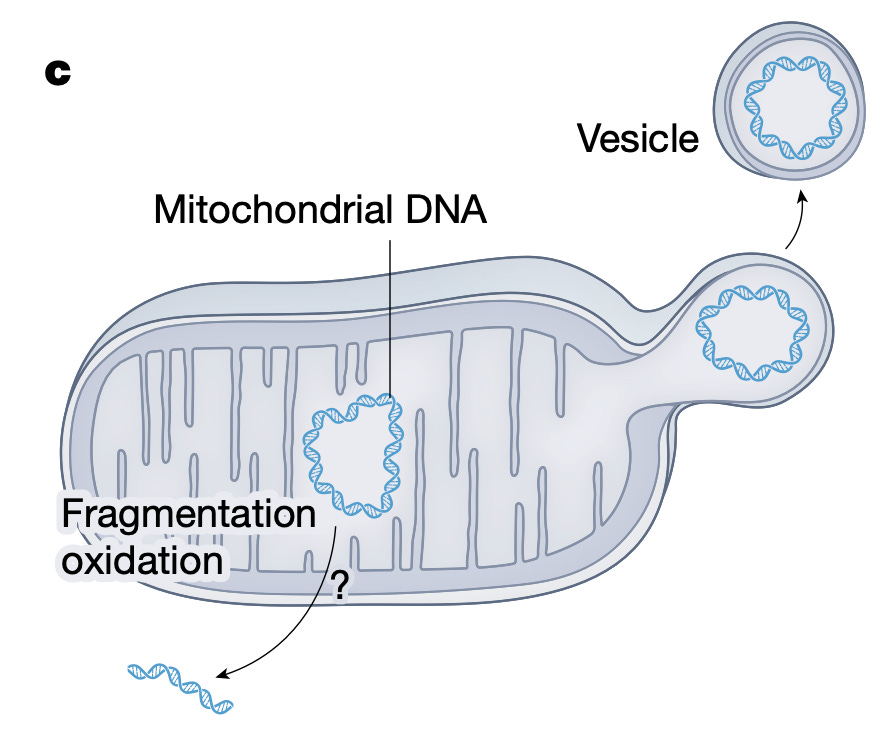Is this the REAL Root Cause of Autoimmune Disease?
A new paper published in Nature proposes that many autoimmune diseases may be driven by the failure of a relationship that began 2 billion years ago...
What if all autoimmune diseases were stemming from the same source, from a seed planted 2 billion years ago that’s just beginning to flower? That might sound wild—but it’s actually the central thesis of a new paper published in Nature, which proposes that many autoimmune diseases may be driven by the failure of a relationship that began 2 billion years ago: the one between your body and your mitochondria.
For me, this idea carries personal weight since I suffered from debilitating inflammatory bowel disease, which went into remission on a ketogenic diet. I’ve seen others similarly put IBD, lupus, multiple sclerosis, and rheumatoid arthritis into remission with lifestyle change. And I desperately want to know how it works. But enough chit chat, the paper is entitled: “A break in mitochondrial endosymbiosis as a basis for inflammatory diseases.”
I’m going to decode what this means and then tell you what it means for you.
What is Mitochondrial Endosymbiosis?
About 2 billion years ago, a cell consumed another, smaller bacteria-like cell (technically it was an Asgard archaeon). That second, smaller cell didn’t get digested and pooped out, but integrated into the larger one. This is what’s meant by “endosymbiosis.”
“Endo-” means within and “symbiosis” derives from the Greek word for “living together,” where two different organisms are associated in a close and prolonged relationship. And, you guessed it, that smaller cell was the precursor to our very own mitochondria, the engine and the powerhouse of most of the cells in your body and the center of your metabolism.
But your mitochondria are far more than just little engines. They are also informational hubs and communication stations, signaling all over your body to cue and coordinate near infinite pathways and processes.
And how mitochondria do this derives, at least in part, from their foreign origins. Truly, mitochondria retain many of the signatures of their foreign origins that mark them much like bacteria or viruses and apart from other components of “you.”
The authors write, “we can also consider mitochondria as a pseudobacterium ‘bricked in’ behind the mitochondrial outer membrane.”
A Break in Endosymbiosis Triggers Autoimmunity
And your body’s immune system is great at recognizing the “other” – foreign invaders. Mitochondria, for the most part, are shielded within cells and so don’t get targeted and attacked. However, the body can selectively release mitochondrial components or mitochondria-derived signaling molecules to trigger certain events.
In the authors’ words, “[T]he endosymbiotic origin of mitochondria marks them apart from the rest of the cell in a way that can be co-opted to produce key messages pertaining to cell fate.”
For example, in response to cell stress, mitochondria can release proteins from the intermembrane space, like cytochrome C, to trigger a form of organized cell death called apoptosis. Mitochondria also retain their very own mitochondrial DNA (mtDNA), separate from the DNA in your cells’ nuclei. And the release of this DNA can also trigger immune reactions. In some cases, the inner portion of mitochondria can swell, and components can literally herniate out (illustrated below) of the mitochondria, pushing components including mtDNA, and triggering an immune/inflammatory reaction.
The core idea of this paper is that inflammatory and autoimmune diseases derive from the breakdown of this endosymbiotic relationship. In other words, mitochondria and their components are exposed and/or leak more than they should, triggering an inflammatory reaction by the body.
This could be the root cause of autoimmune diseases.
What Caused the Break in Endosymbiosis?
And this is important because of the two obvious questions that follow:
What causes this breakdown of endosymbiosis?
What can we do to fix it?
As clearly illustrated in a core figure of the paper, the authors hypothesize (and I agree) that environmental factors common to modern living: obesity, processed food, lack of exercise, disrupted circadian rhythm, environmental pollutants, are what trigger the break in endosymbiosis, which triggers downstream inflammation and autoimmune disease: rheumatoid arthritis, inflammatory bowel disease, multiple sclerosis, and so on. If you want specifics of the pathways shown in this figure, feel encouraged to read the paper.
How to Fix Mitochondrial Endosymbiosis
Keep reading with a 7-day free trial
Subscribe to StayCurious Metabolism to keep reading this post and get 7 days of free access to the full post archives.







